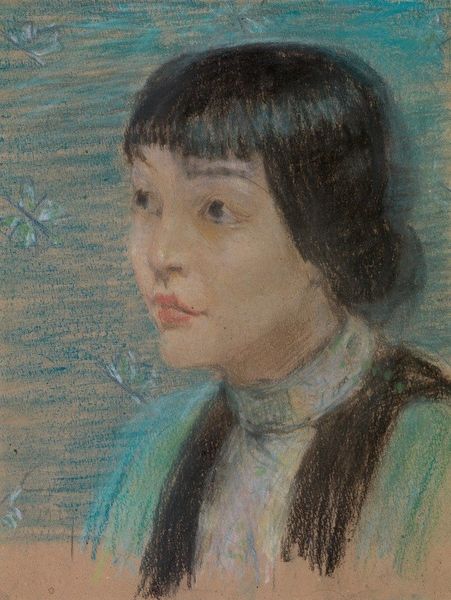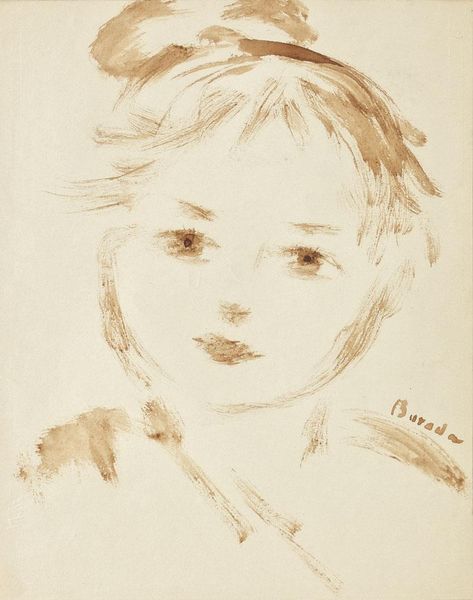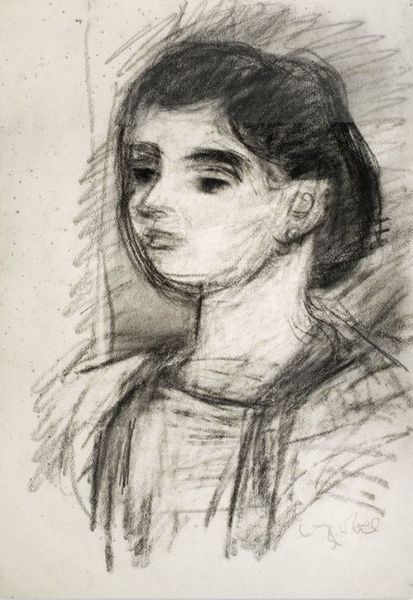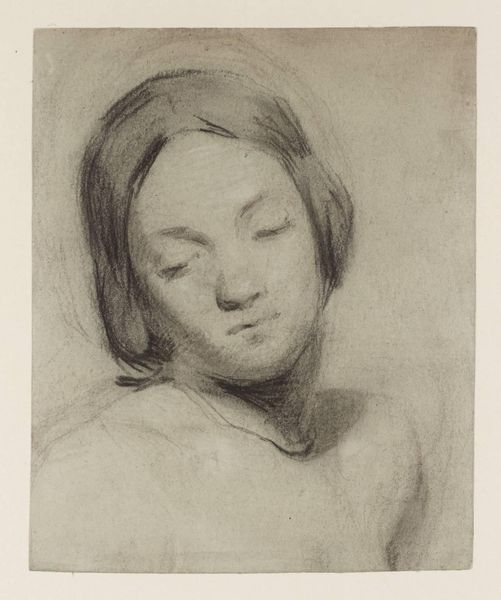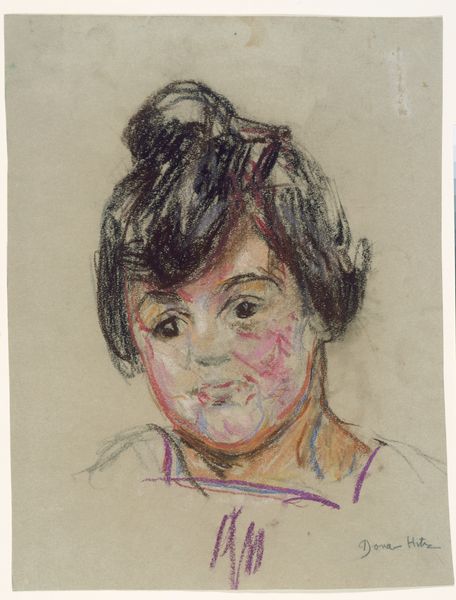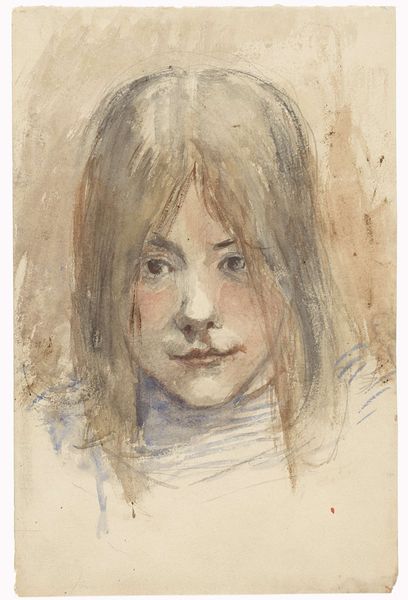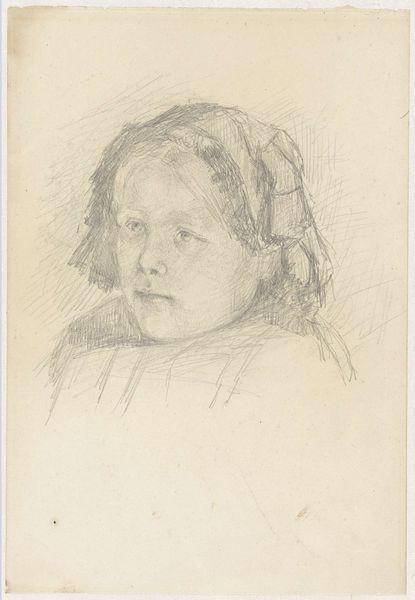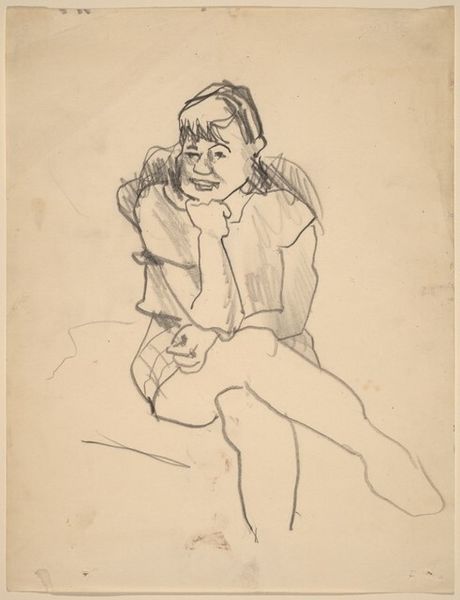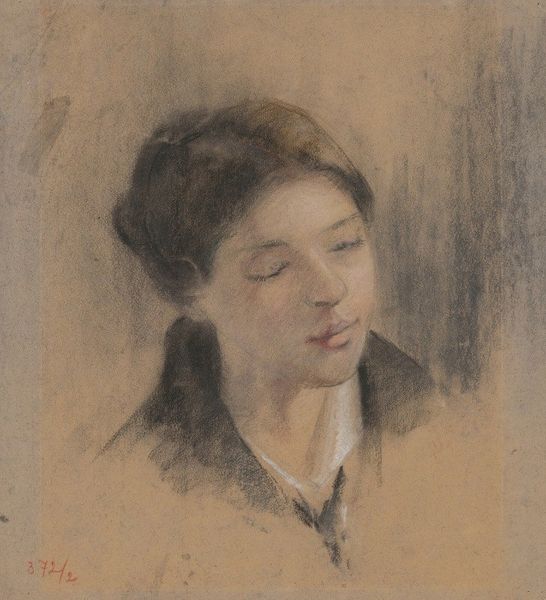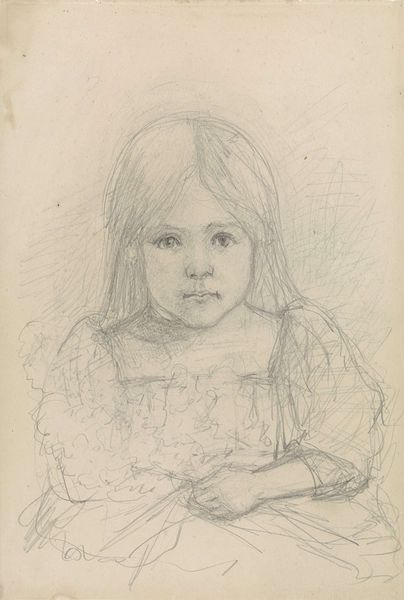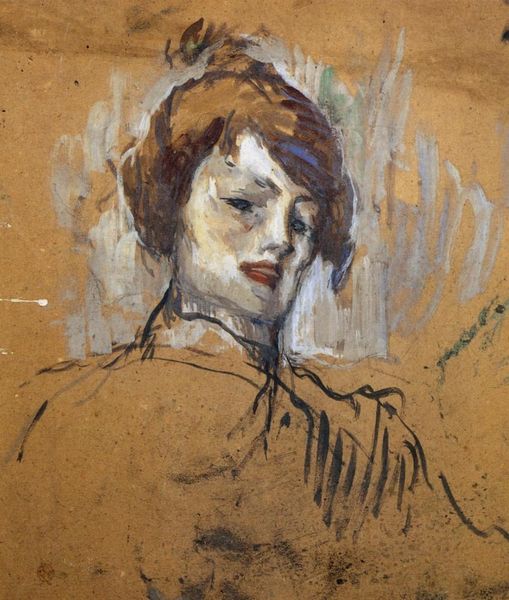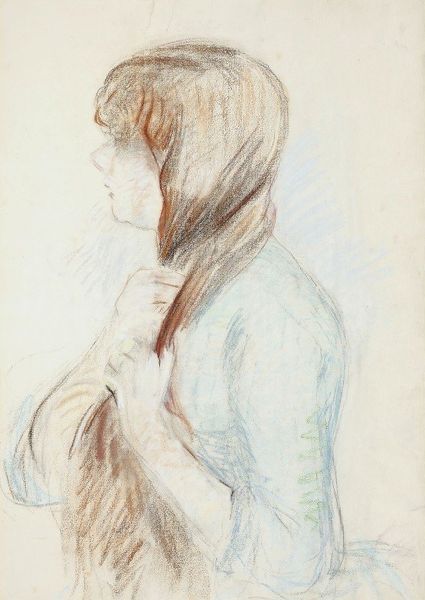
drawing, pencil
#
portrait
#
drawing
#
figurative
#
pencil sketch
#
pencil drawing
#
romanticism
#
pencil
#
portrait drawing
#
realism
Copyright: Public Domain: Artvee
Curator: This captivating image is Berthe Morisot’s “Portrait D’enfant,” created around 1826 using pencil. It's such a simple drawing, yet utterly compelling. Editor: Yes, simple, but possessing this air of melancholy. Her downward gaze...it gives me pause. What could be on her mind? Is this a portrait of innocence, or the beginning of something else entirely? Curator: The structural elements offer clues. Note the delicate lines used for the face, contrasted with the more robust strokes defining her hair. The artist uses contrasting pastel touches of blue to soften the black of the lines, which brings a certain youthfulness to the subject, an intentional fragility. Editor: Precisely. The blues create an emotional aura, suggesting vulnerability. Blue is often tied to fidelity, so the drawing gains additional weight with loyalty. I wonder, was she asked to behave well? Was the portrait used for the family? Curator: Intriguing interpretations. Though the form indicates something deeper. The light source seems diffuse, creating soft shadows that model her face, drawing our eyes to its center. And, notably, the texture. You can almost feel the grain of the paper. The simplicity is deceptive; it focuses your attention. Editor: And I do get caught on the red of the mouth, a vivid note within an otherwise muted palette. Red typically stands for passion, for defiance…or just health and vitality. Here, the symbolism fights within the artistic interpretation of youth. It creates conflict for the audience. Curator: The beauty lies in this very ambiguity. Morisot offers a glimpse of the human, with the minimal of detail to communicate great inner complexities. Editor: A successful portrait capturing transient childhood that has reverberations still to this day.
Comments
No comments
Be the first to comment and join the conversation on the ultimate creative platform.
